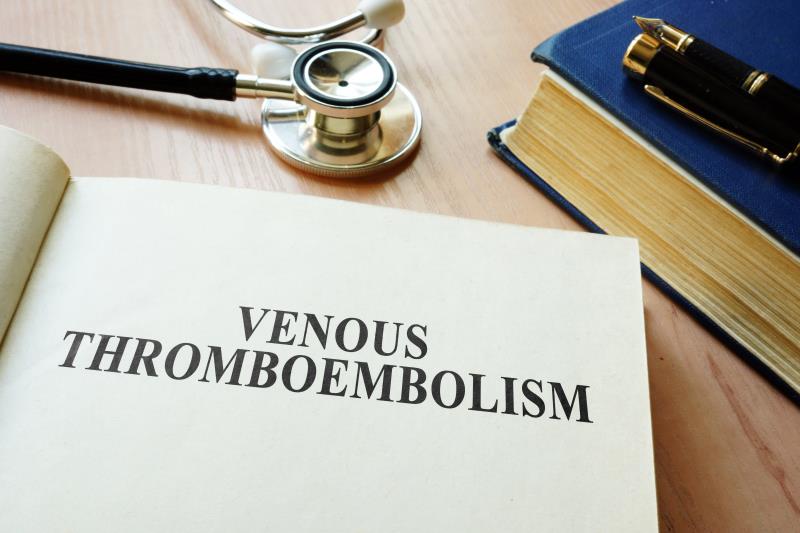
The presence of metabolic syndrome* appears to increase the risk of recurrent venous thromboembolism (VTE)** among patients with deep vein thrombosis (DVT), a recent study showed.
“[W]e found the presence of any one component of metabolic syndrome in patients with DVT to independently increase the risk of VTE recurrence; this risk … increased successively with each additional component of metabolic syndrome,” said the researchers.
The researchers analysed data of 151,054 patients (mean age 58 years, 56 percent female, 69 percent Caucasian) diagnosed with DVT between 2004 and 2017 as listed in the Indiana Network for Patient Care database. Of these, 68 percent had at least one component of metabolic syndrome, with 22 percent having one component, and 24, 17, and 5 percent having two, three, and four components, respectively. Hypertension was the most common component of metabolic syndrome (58 percent), followed by hyperlipidaemia, diabetes mellitus (DM), and obesity (41, 23, and 19 percent, respectively).
VTE recurrence rates increased with rising number of metabolic syndrome components (7, 14, 21, 30, and 37 percent recurrence rate with zero, one, two, three, and four components of metabolic syndrome). [Blood Adv 2020;4:127-135]
All four metabolic syndrome components were associated with an elevated risk of VTE recurrence, with the highest risk tied to the presence of hyperlipidaemia (adjusted odds ratio [adjOR], 1.779, 95 percent confidence interval [CI], 1.721–1.839), followed by obesity (adjOR, 1.535, 95 percent CI, 1.484–1.588), hypertension (adjOR, 1.470, 95 percent CI, 1.413–1.529), and DM (adjOR, 1.419, 95 percent CI, 1.375–1.465).
The risks were higher than that associated with comorbid chronic kidney disease (adjOR, 1.111), cancer (adjOR, 1.255), or smoking history (adjOR, 1.266).
“Results … suggest that both the composite metabolic syndrome diagnosis [at least three components] as well as the presence of each individual metabolic syndrome component are important contributors to this recurrence risk,” the researchers said, though they acknowledged that defining metabolic syndrome components according to ICD codes as opposed to guideline-directed cut-off levels may have affected the findings.
This association between elevated VTE recurrence risk and metabolic syndrome persisted despite a higher rate (23 percent vs 18 percent [patients without metabolic syndrome]) and duration of anticoagulant use (92 vs 50 days) in patients with metabolic syndrome. “[A]s anticoagulation therapy is known to be very effective at reducing the risk of recurrent VTE, it is possible that the effect of metabolic syndrome on recurrence is actually underestimated in our dataset,” they added.
Of the four metabolic syndrome components, only hypertension was associated with an elevated risk of mortality (adjOR, 1.209, 95 percent CI, 1.163–1.258), with DM (adjOR, 0.901, 95 percent CI, 0.869–0.934), obesity (adjOR, 0.767, 95 percent CI, 0.735–0.800), and hyperlipidaemia (adjOR, 0.444, 95 percent CI, 0.428–0.460) associated with lower mortality risk than in individuals without these components.
“Having one or more of these conditions of obesity, hyperlipidaemia, hypertension, or diabetes creates a worse outcome for patients with blood clots. But the good news is, all four of these conditions can be treated and modified,” said study first author Dr Lauren Stewart from the Indiana University School of Medicine, Indianapolis, Indiana, US. “This study underscores the need for further research into co-treating metabolic syndrome in addition to prescribing anticoagulants,” she added.
“Further research is needed to better elucidate the role of metabolic syndrome in VTE, particularly in its effect on morbidity-related outcomes … because this could aid in decision-making regarding implementation of the most appropriate adjuvant therapies in those diagnosed with DVT,” said Stewart and co-authors.
“We believe this to be an area of significant importance in the treatment of DVT because the components of metabolic syndrome represent common, often undertreated, and potentially modifiable risk factors in these patients,” they added.